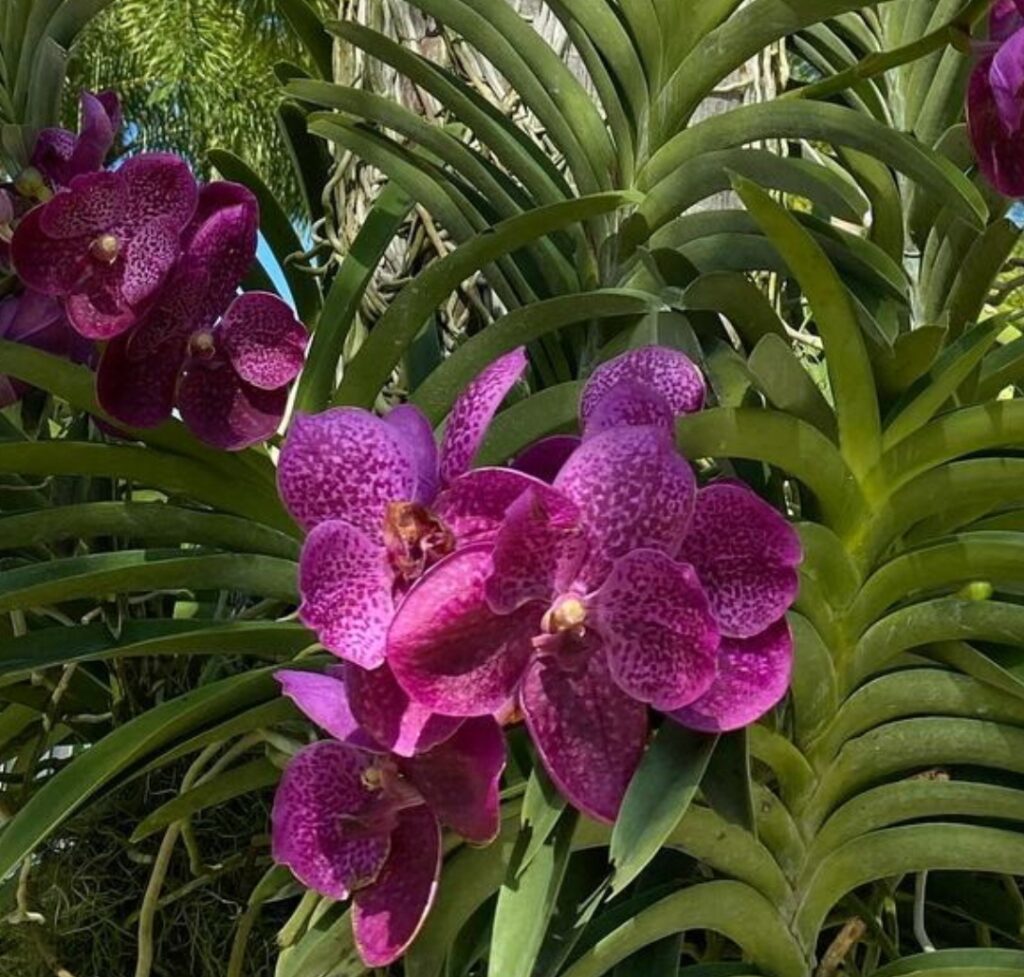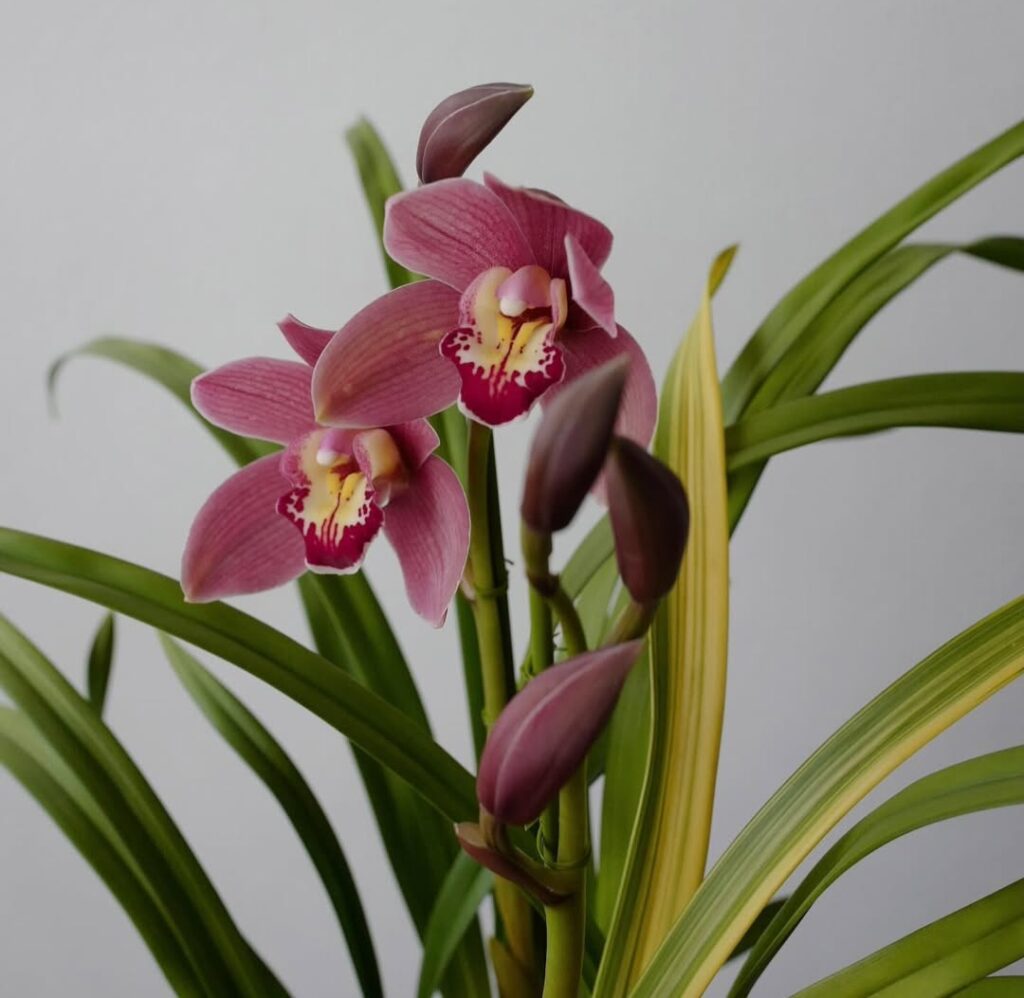
Orchids are treasured for their exquisite blooms, but after the flowers fade, many growers struggle to encourage their plants to rebloom. The good news is that with the right natural techniques, you can stimulate healthy, vibrant blooms without resorting to synthetic chemicals or overly complicated routines.
In this guide, we’ll explore simple, organic methods to help your orchids rebloom. These techniques focus on mimicking the plant’s natural environment, encouraging it to flourish and reward you with stunning flowers once again.

- 1 Orchid Reblooming
- 2 Understanding Orchid Growth Cycles
- 3 1. Optimise Lighting Conditions
- 4 2. Introduce Temperature Changes
- 5 3. Adjust Watering Routine
- 6 4. Feed Your Orchid Naturally
- 7 5. Provide Proper Humidity
- 8 6. Repot When Necessary
- 9 7. Be Patient and Consistent
- 10 Common Mistakes to Avoid
- 11 The Reward of Patience
- 12 FAQs
Orchid Reblooming
Understanding Orchid Growth Cycles
Before diving into techniques, it’s essential to understand the orchid’s growth cycle. Orchids go through three main phases: the growth phase, the flowering phase, and the dormancy phase. During the growth phase, the plant focuses on developing new
leaves, roots, and pseudobulbs, which are essential for energy storage. The flowering phase is when the orchid directs its stored energy into producing flower spikes and beautiful blooms. After the blooms fade, the plant enters dormancy, a resting period where it conserves resources and prepares for the next growth cycle.
To encourage reblooming, you need to support your orchid through each stage of this cycle by providing the right care and environmental conditions.
1. Optimise Lighting Conditions
Light is one of the most critical factors for reblooming. Many orchids, especially species like Phalaenopsis and Cattleya, require bright, indirect light to initiate flower spikes. Without adequate light, orchids will focus on maintaining their foliage rather than producing blooms.
Natural Technique: Place your orchid near an east-facing window where it gets morning sun but is shielded from harsh afternoon rays. If natural light is insufficient, you can supplement with full-spectrum grow lights that mimic sunlight.
Tip: Observe your orchid’s leaves to gauge light levels. Light green is usually the colour of healthy orchid eaves. Dark green leaves suggest insufficient light, while yellowing leaves may indicate too much direct sunlight exposure.
2. Introduce Temperature Changes
Many orchids rely on temperature fluctuations to trigger reblooming. In their natural habitats, cooler nights signal the end of the growing season and the start of the flowering phase. Mimicking these conditions at home can help your orchid rebloom.
Natural Technique: Move your orchid to a cooler location at night, ideally where temperatures drop by 10–15°F (5–8°C). For example, during fall, you can place the plant near a slightly open window to expose it to natural nighttime cooling.
Tip: Ensure the temperature drop isn’t too extreme. Most orchids thrive with nighttime temperatures around 60–65°F (15–18°C). Avoid exposing your plant to freezing conditions, which can cause irreversible damage.
3. Adjust Watering Routine
Overwatering or underwatering can stress your orchid and prevent it from reblooming. Orchids need a balance of moisture and drying periods to stay healthy, especially during their dormancy phase.
Natural Technique: Reduce watering during the dormancy phase but avoid letting the plant dry out completely. Water sparingly, ensuring the potting medium dries slightly between sessions.
Tip: To hydrate your orchids, use distilled water or rainwater. These natural options are free from the chemicals found in tap water, which can build up in the potting medium and harm your plant’s roots over time.
4. Feed Your Orchid Naturally
Orchids require nutrients to build energy for reblooming, especially during the growth phase. However, over-fertilising or using chemical-based products can do more harm than good, potentially burning the roots or hindering flower production.
Natural Technique: Use organic fertilisers such as diluted fish emulsion or seaweed extract. Apply fertiliser during the growth phase and reduce feeding during dormancy. Use the “weak weekly” method—dilute the fertiliser to half strength and feed your orchid once a week.
Tip: Avoid fertilising during the flowering phase, as excessive nutrients can cause buds to drop prematurely.
5. Provide Proper Humidity
Orchids are native to tropical climates where humidity levels are consistently high. Dry air can stress your orchid and delay reblooming, especially during the flowering phase.
Natural Technique: Create a natural humidity tray by placing a shallow dish filled with water and pebbles beneath the orchid pot. To avoid root rot, make sure the pot is above the waterline. Alternatively, group several orchids together to create a micro-humid environment around the plants.
Tip: Maintain humidity levels between 50–70% and increase air circulation using a fan or open windows to prevent mould and fungal infections.
6. Repot When Necessary
An orchid growing in old, compacted potting medium may struggle to rebloom. Over time, the medium can decompose, reducing airflow to the roots and retaining too much moisture.
Natural Technique: Repot your orchid every 1–2 years using a fresh, well-draining potting medium such as bark, sphagnum moss, or coconut husk. Spring or early summer is the best time for repotting, as orchids are typically in their growth phase.
Tip: Choose a pot that’s only slightly larger than the root mass. Orchids prefer snug containers, as this mimics their natural epiphytic growing conditions in the wild.
7. Be Patient and Consistent
Reblooming takes time, and each orchid species has its own schedule. While Phalaenopsis orchids may rebloom within a year, other species, such as Dendrobiums or Cattleyas, might take longer.
Natural Technique: Focus on providing consistent care and resist the urge to change your orchid’s environment too frequently. Stability is key to reducing stress and encouraging blooming.
Tip: Keep a journal of your orchid’s care routine, including watering, feeding, and temperature changes. This can help you identify what works best for your plant.
Common Mistakes to Avoid
Overwatering: Too much water can lead to root rot and prevent flowering.
Over-Fertilizing: Excessive nutrients can harm roots and delay blooming.
Frequent Relocation: Orchids dislike being moved, especially when forming flower spikes.
Neglecting Dormancy: Some orchids, like Cattleya and Dendrobium, need a rest period before reblooming.
The Reward of Patience
Encouraging orchid reblooming with natural techniques is a fulfilling journey that requires patience and attentiveness. By focusing on natural, sustainable methods, you can create an environment where your orchids thrive and bloom repeatedly.
Take the time to understand your orchid’s unique needs, and enjoy the breathtaking reward of seeing it rebloom. With consistent care and a little patience, your orchids will continue to grace you with their beauty for years to come.
For more tips on orchid care, explore our other guides on troubleshooting, species-specific advice, and advanced growing techniques to master the art of orchid cultivation.
FAQs
What is Orchid Reblooming?
Orchid reblooming refers to the process by which an orchid produces a new flower spike and blooms again after its initial flowering period. This cycle allows orchids to display vibrant blooms multiple times throughout the year under the right conditions.
How Can I Encourage Orchid Reblooming?
To encourage orchid reblooming, ensure your plant receives adequate light, maintains proper temperature cycles, is watered and fertilized correctly, and is given a rest period after blooming. Providing these optimal conditions supports the orchid’s natural reblooming cycle
What Are the Best Conditions for Orchid Reblooming?
Optimal conditions for orchid reblooming include bright, indirect light, consistent temperatures with a slight drop at night, regular watering without waterlogging, and balanced fertilization. Additionally, maintaining proper humidity levels and ensuring good air circulation are crucial for successful reblooming.
4. How Often Do Orchids Rebloom?
The frequency of orchid reblooming varies by species. Some orchids, like Phalaenopsis, can rebloom once or twice a year, while others may rebloom multiple times annually. Providing consistent care tailored to the specific orchid type can influence how often it reblooms.
5. Why Isn’t My Orchid Reblooming?
If your orchid isn’t reblooming, it may be due to inadequate light, improper watering, incorrect temperature settings, or lack of nutrients. Stress from pests or diseases can also hinder reblooming. Assessing and adjusting these care factors can help promote reblooming.
6. Can Pruning Help with Orchid Reblooming?
Yes, pruning can aid in orchid reblooming. After the initial bloom fades, cutting the flower spike back to a node can encourage the plant to produce a new spike and rebloom. However, the exact pruning method may vary depending on the orchid species.
7. What Fertilizer Should I Use to Promote Orchid Reblooming?
Using a balanced orchid fertilizer (such as 20-20-20) at half the recommended strength every two weeks during the growing season can promote healthy growth and reblooming. Some growers also use fertilizers with higher phosphorus content to encourage flowering.
8. How Does Light Affect Orchid Reblooming?
Light is a critical factor in orchid reblooming. Insufficient light can prevent orchids from storing enough energy to produce new blooms. Providing bright, indirect light helps ensure that the orchid has the necessary energy to rebloom.
9. Is Temperature Important for Orchid Reblooming?
Yes, temperature plays a significant role in orchid reblooming. Many orchids require a slight drop in nighttime temperatures to trigger the reblooming process. Maintaining appropriate day and night temperature ranges is essential for successful reblooming.
10. Should I Repot My Orchid to Encourage Reblooming?
Repotting can support orchid reblooming by providing fresh growing medium and more space for root growth. It’s best to repot after the orchid has finished blooming to reduce stress and encourage new growth that leads to reblooming.
How Does Humidity Influence Orchid Reblooming?
Adequate humidity levels (typically between 40-70%) are important for orchid health and reblooming. Low humidity can cause stress and inhibit flower production, while proper humidity supports overall plant vigor and the reblooming process.
Can Environmental Stress Trigger Orchid Reblooming?
Mild environmental stress, such as a slight reduction in watering or a temporary drop in temperature, can sometimes trigger orchid reblooming by signaling the plant to produce new blooms. However, excessive stress can be detrimental, so it’s important to carefully manage any intentional stressors.





